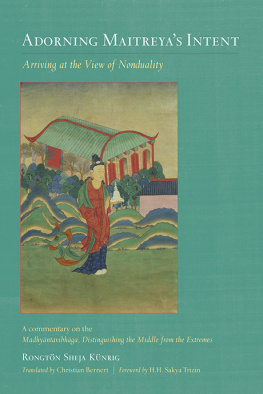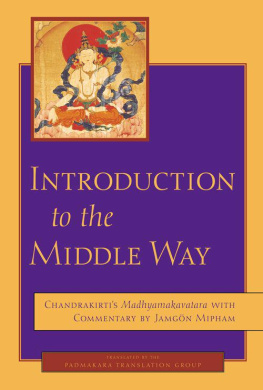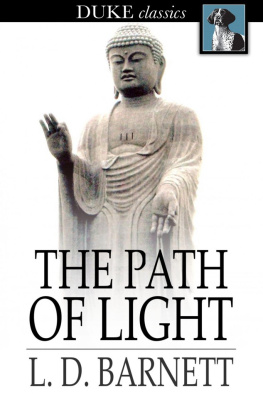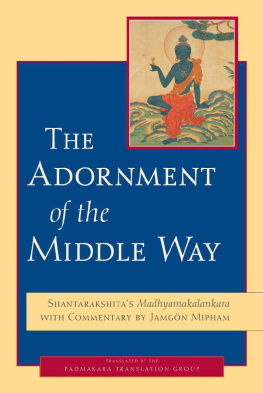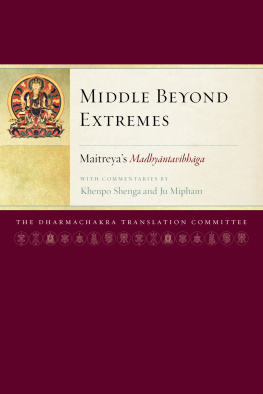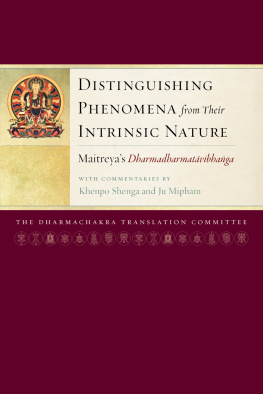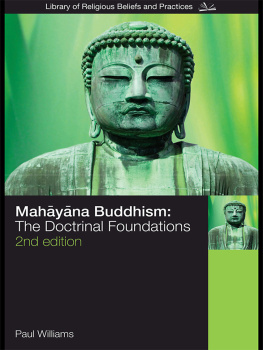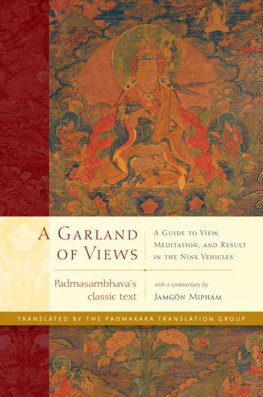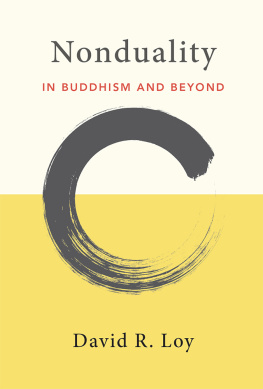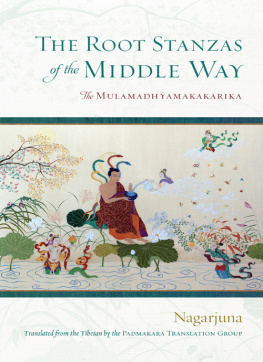Sign up to receive news and special offers from Shambhala Publications.

Or visit us online to sign up at shambhala.com/eshambhala.
Adorning Maitreyas Intent

Arriving at the View of Nonduality

Rongtn Sheja Knrig
TRANSLATED BY
Christian Bernert
FOREWORDS BY
H.H. Sakya Trizin and Khenpo Ngawang Jorden

SNOW LION
BOULDER
2017
Snow Lion
An imprint of Shambhala Publications, Inc.
4720 Walnut Street
Boulder, Colorado 80301
www.shambhala.com
2017 by Christian Bernert
Cover art: Maitreya. From Situs set of Eight Great Bodhisattvas, 19th century C.E. Gift of Shelley & Donald Rubin Foundation. Rubin Museum of Art / Art Resource, NY.
All rights reserved. No part of this book may be reproduced in any form or by any means, electronic or mechanical, including photocopying, recording, or by any information storage and retrieval system, without permission in writing from the publisher.
LIBRARY OF CONGRESS CATALOGING-IN-PUBLICATION DATA
Names: Rong-ston Shes-bya-kun-rig, 13671449, author. | Bernert, Christian, translator.
Title: Adorning Maitreyas intent: Arriving at the View of Nonduality / Rongton Sheja Kunrig; translated by Christian Bernert.
Other titles: Dbus dang mtha rnam par byed pai rnam bshad mi pham dgongs rgyan. English
Description: Boulder: Snow Lion, 2017. | Includes bibliographical references and index. | Includes translation from Tibetan.
Identifiers: LCCN 2016011616 | ISBN 9781611803662 (paperback: alk. paper) | eISBN 9780834840393
Subjects: LCSH: Maitreyanatha Madhyantavibhanga. | Yogacara (Buddhism)Early works to 1800. | BISAC: RELIGION / Buddhism / Tibetan. | RELIGION / Buddhism / Sacred Writings.
Classification: LCC BQ2965 .R6813 2017 | DDC 294.3/85dc23
LC record available at https://lccn.loc.gov/2016011616
CONTENTS


I am very pleased that Rongton Sheja Kunrigs unsurpassable commentary on Maitreyas Madhyntavibhga has been translated into English and thus made available to a great number of Dharma students worldwide.
Founder of Nalendra Monastery in Tibet and one of the foremost expo-nents of the Yogacara school of thought, Rongton Sheja Kunrig is known as one of the Six Ornaments of Tibet. A formidable scholar and a mystic, he is regarded as an emanation of Maitreya as well as a reincarnation of some of the greatest Indian panditas of the past.
In this masterful work, Rongton Sheja Kunrig elucidates with remark-able clarity the core teaching contained in the Madhyntavibhga, describing in detail the process of liberation from a state of total affliction to the realization of the inseparability of clarity and emptiness.
Christian Bernerts translation, Adorning Maitreyas Intent: Arriving at the View of Nonduality, aptly conveys the essence of the great Sakya masters treatise, while making it accessible to those readers who lack advanced philosophical training. It is bound to greatly deepen the understanding of all who undertake its study and it will surely be a source of great benefit to all.

The Sakya Trizin
October 5, 2016

Awakened wisdom is known to be both vast and profound, allowing an enlightened being to teach others according to their dispositions. Count-less masters have studied, contemplated, and meditated on the Buddhas words and have attained freedom from delusion as a result of their efforts. Many have commented on his words, guiding later generations to the same realizations. Based on their realization, on the perspective they adopted to teach the Dharma, and on the receptivity of their audience, the teachings developed in various ways, giving rise to the diverse traditions of Buddhism we know today.
We are extremely pleased to publish the translation of an important commentary on the Madhyntavibhga, a key treatise for the understanding of the Yogacara tradition, one of the main systems of Buddhist thought and practice in India. Composed by the great Sakya scholar Rongton Sheja Kunrig (13671449), this commentary elucidates crucial concepts of the tradition, like a key unlocking the door of an immeasurable treasury.
By the merit generated with this work, may all beings realize that which lies beyond duality.
With my best wishes,
Khenpo Ngawang Jorden
Director of the International Buddhist Academy (IBA)
Kathmandu, Nepal
March 2016

Of the many individuals who contributed to the production of this book, we would like to extend our thanks in particular to Khenpo Jamyang Kunga, a direct disciple of the late Khenchen Appey Rinpoche, who taught this text to the translator over a one-month period in Kathmandu in the autumn of 2012. We also thank Ven. Ngawang Tenzin from the International Buddhist Academy, Kathmandu, who took the time to read through the entire text along with the manuscript of the translation. Thanks are due also to the Venerable French monk Damien Jampa for reviewing the work, to Vivian Paganuzzi for editing and proofreading, and to Markus Viehbeck and Rory Lindsay for their suggestions for the introduction.
We would also like to thank Nikko Odiseos and the entire Shambhala team for taking on this project and assisting us throughout the last stages of publication.
Finally, we would like to express our gratitude to the Khenchen Appey Foundation for funding this project.

Buddhism is often referred to as the Middle Way, a path free of extremes. As a seeker, Siddhartha Gautama recognized the futility of a worldly life indulging in sense pleasures, and also the inefficacy of extreme forms of spiritual practice, and decided to renounce both. As the Buddha, the Awakened One, he realized that all mistaken views are contained within the extremes of permanence and annihilation, and taught a view free of speculative asser-tions about reality.
The path taught by the Buddha is based on a profound understanding of reality, and by following it one is led to realize the way things really are, free from mental projection and personal interpretation, without adding to or denying any aspect of the actual state of things. It is this insight that will free the individual from the delusion that is at the very root of all suffering.
Next page
